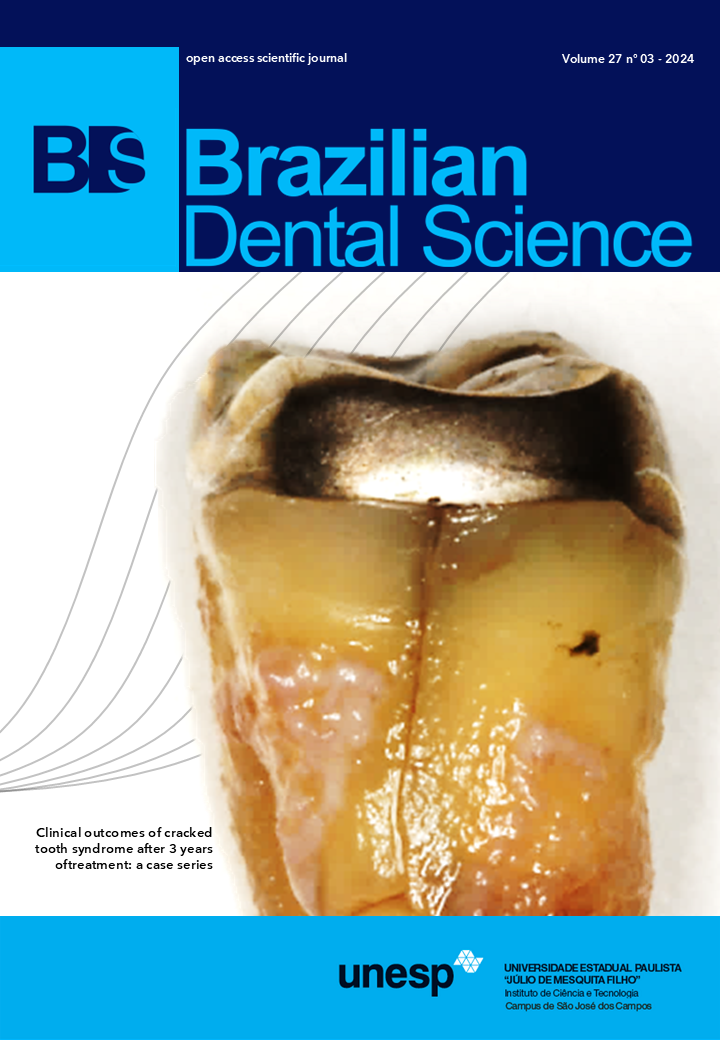Skeletal bone density is associated with periodontitis: systematic review and metanalysis
DOI:
https://doi.org/10.4322/bds.2024.e4350Resumo
Objective: This study aimed to evaluate whether low skeletal bone density conditions, such as osteoporosis (OPR), osteopenia (OPN) and low bone mineral density (low BMD) are associated with periodontitis. Material and Methods: Embase, Lilacs, PubMed, Scopus, Web of Science, Livivo and Google Scholar were searched up to July 2023. Observational studies comparing different BMD levels, showing clinical data of periodontitis and with adjusted analysis for confounding factors were included. Reviewers independently conducted study selection, data extraction, methodological quality and certainty of evidence assessments. Results: 32 studies were included, 20 eligible for the metanalysis. Subjects with OPR/OPN/lowBMD show significantly more odds of having periodontitis (OR=1.40, 95%CI=1.26-1.53, I2=82.9%). Association between skeletal bone density and periodontitis showed dose-response gradient, with higher effect size in osteoporotic when compared to the osteopenic subjects. Statistical association with low heterogeneity was observed in female (OR=1.42, 95%CI=1.13-1.71, I2=20.4%), in post-menopausal women (OR=1.47, 95%CI=1.15-1.78, I2=18.7%) and periodontitis case-definition based in clinical attachment level/alveolar bone loss (OR=1.39, 95%CI 1.16-1.62, I2=26.5%). Conclusion: Routine periodontal supportive care and screening for skeletal bone diseases risk groups, may be an important tool to fully assess and care for patients with osteoporosis and osteopenia.
KEYWORDS
Metanalysis; Osteopenia; Osteoporosis; Periodontal attachment loss; Periodontitis.
Downloads
Downloads
Publicado
Como Citar
Edição
Seção
Licença
TRANSFERÊNCIA DE DIREITOS AUTORAIS E DECLARAÇÃO DE RESPONSABILIDADE
Toda a propriedade de direitos autorais do artigo "____________________________________________________________________" é transferido do autor(es) para a CIÊNCIA ODONTOLÓGICA BRASILEIRA, no caso do trabalho ser publicado. O artigo não foi publicado em outro lugar e não foi submetido simultaneamente para publicação em outra revista.
Vimos por meio deste, atestar que trabalho é original e não apresenta dados manipulados, fraude ou plágio. Fizemos contribuição científica significativa para o estudo e estamos cientes dos dados apresentados e de acordo com a versão final do artigo. Assumimos total responsabilidade pelos aspectos éticos do estudo.
Este texto deve ser impresso e assinado por todos os autores. A versão digitalizada deverá ser apresentada como arquivo suplementar durante o processo de submissão.




























